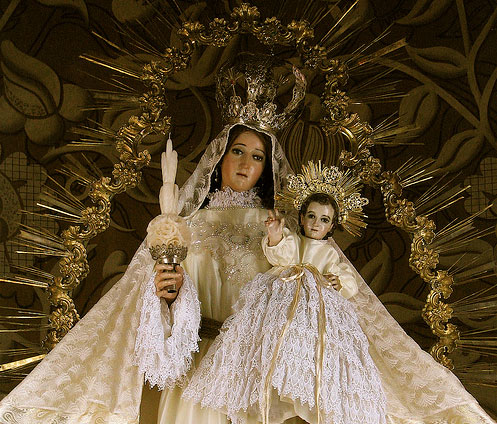
La Candelaria is celebrated across much of the Christian world, but as with most traditions, Yucatecos have found a way to celebrate it in a way all their own. This is especially true in Valladolid, where the Virgin of the Candelaria is the city’s patron saint. The legend, which has its origin in Spain, states that upon returning to town from the wilderness a young slave encountered a beautiful woman holding a child and a candle. Feeling in his heart that this was no ordinary woman, the slave told his master who then provided shelter for the woman and her child. In gratitude, the woman, who turned out to be an emanation of the Virgin Mary, cleansed the community of the plague and filled their hearts with joy. In commemoration of the Virgin of Candelaria, people across Mexico enjoy tamales on February 2nd. According to tradition, the tamales must be provided by the person or persons who found a small figure of baby Jesus in their Rosca de Reyes on the date of the Epiphany, January 6th, also known as Día de Reyes or Three Kings’ day.

In Mérida, celebrations on February 2nd center around the 16th-century Templo de la Candelaria, in Barrio de San Juan downtown.īut in Valladolid the celebrations are not limited to a single day.
Cuando es el dia de la candelaria full#
Instead, a full 12 days are dedicated to la Virgen de la Candelaria. During this time, the city holds several processions and masses, but also holds an enormous fair complete with music, entertainment, rides, and of course lots and lots of food. The highlight of the festivities, however, is an enormous party organized by a local Gremio (or guild) complete with bullfighting, fireworks, and Yucatán’s traditional Vaquería to the rhythm of the state’s most famous dance, the Jarana. Keep in mind that there is a big difference between the party-like atmosphere of the Vaquería and the solemn religious processions which run between the Church of the Candelaria and the Calzada de Los Frailes please be mindful and respectful.

Like all Yucatecan towns and cities, Valladolid is full of a great many warm and wonderful people, so if you feel like joining in on the festivities don’t let shyness get in your way. You are sure to have a wonderful time!Ĭoming from a Mexican/Canadian family, Carlos Rosado is an adventure travel guide, blogger, and photographer with studies in Multimedia, Philosophy, and Translation. Photography by Carlos Rosado and La Razón Noticias for its use in Yucatán Today.In the very Catholic Mexico, many celebrate the religious holiday known as Candlemas (or Dia de la Candelaria in Spanish). By learning about this holiday, you’re also immersing yourself in one of the most important aspects of Mexican culture: its people’s religious beliefs, and how they’re expressed through celebration. Ĭandlemas in Mexico may be best known as the day that Mexicans finally take down the Nativity scene that they put up before Christmas. This is a very religious holiday, and is also known as the day of the “Presentation of Jesus at the Temple.” So, what is Candlemas Day in Mexico? What are the most common Mexican holidays and traditions surrounding this holiday? Learn more about the significance of the Nativity scene in this holiday and more, with. This name takes root in the biblical book of Luke, and also commemorates the cleansing of the Blessed Virgin Mary. According to Jewish custom, a woman must be cleansed about a month after giving birth and so Candlemas is thought to be the approximate time Mary would have done so.

Mexicans celebrate Candlemas forty days after Christmas, February 2, each year. On Dia de la Candelaria, Mexicans take down the Nativity scene that they set up before Christmas.


 0 kommentar(er)
0 kommentar(er)
